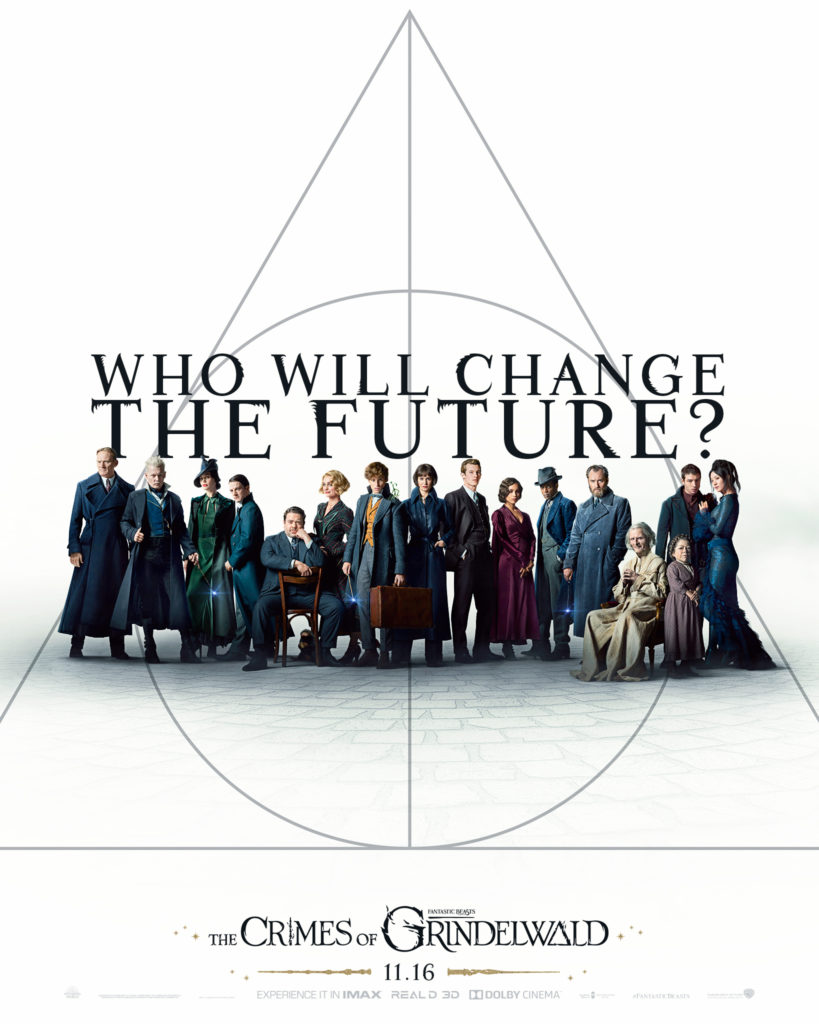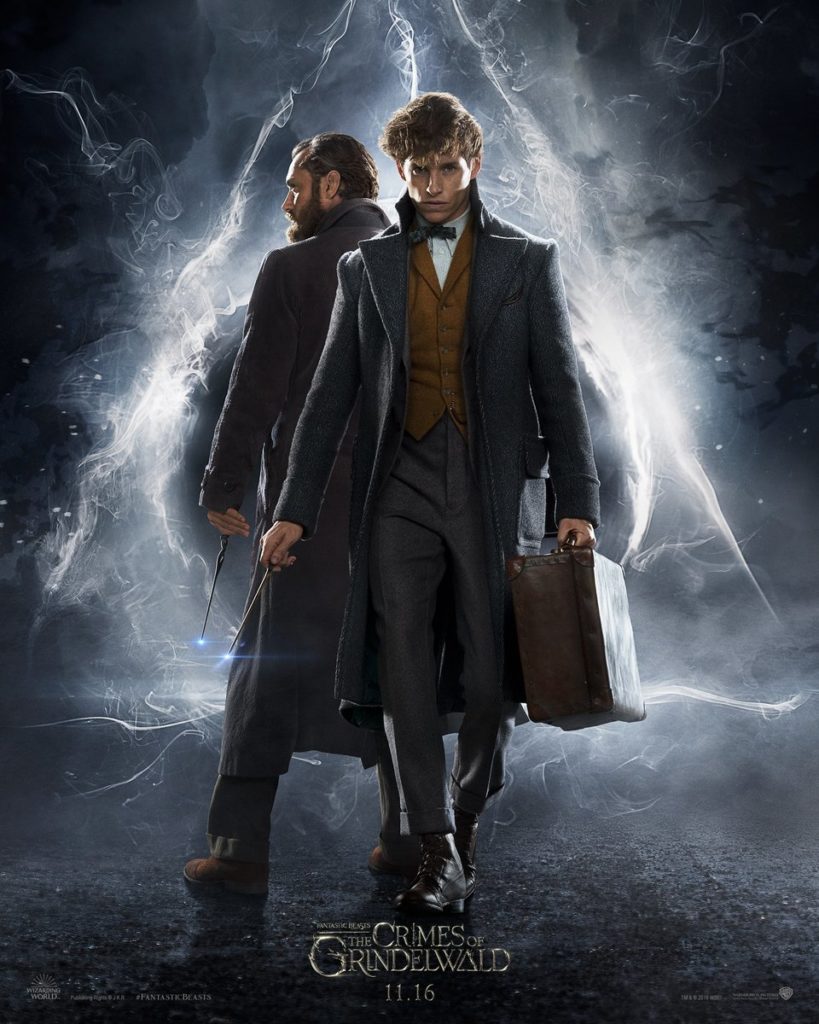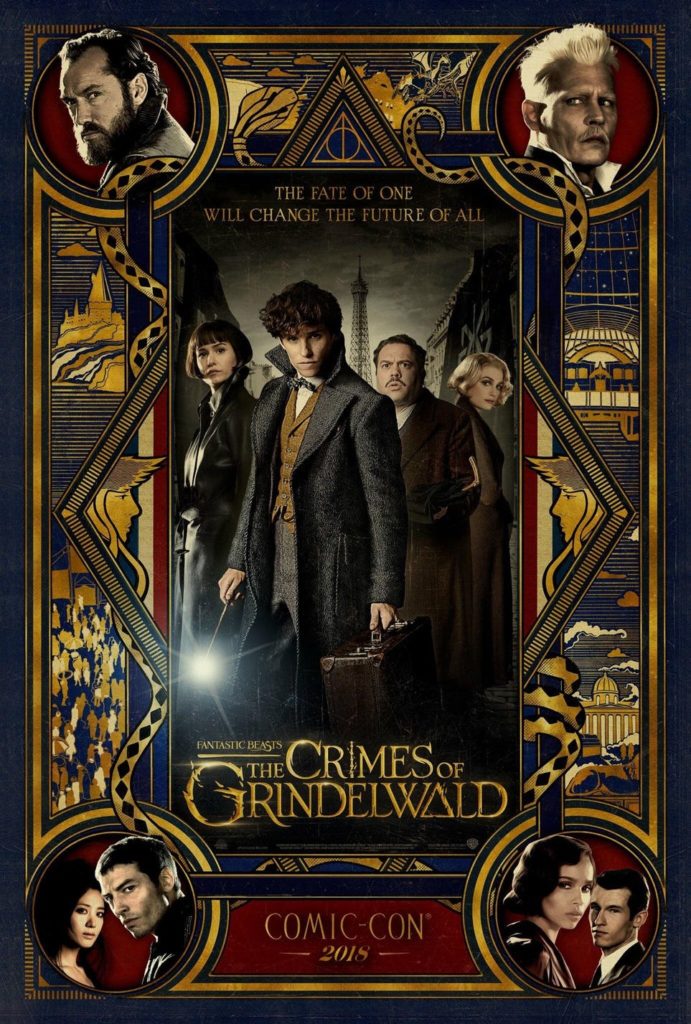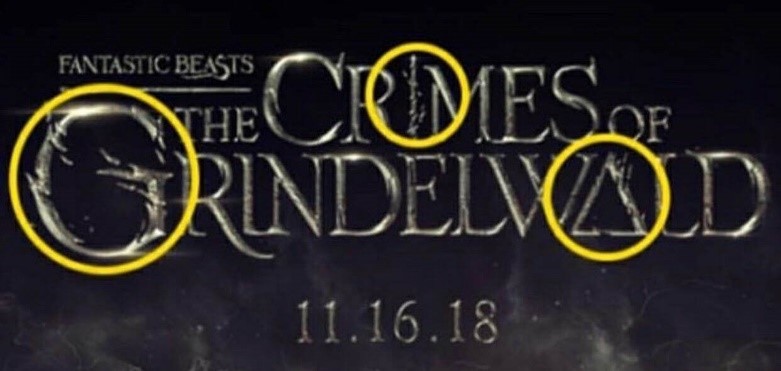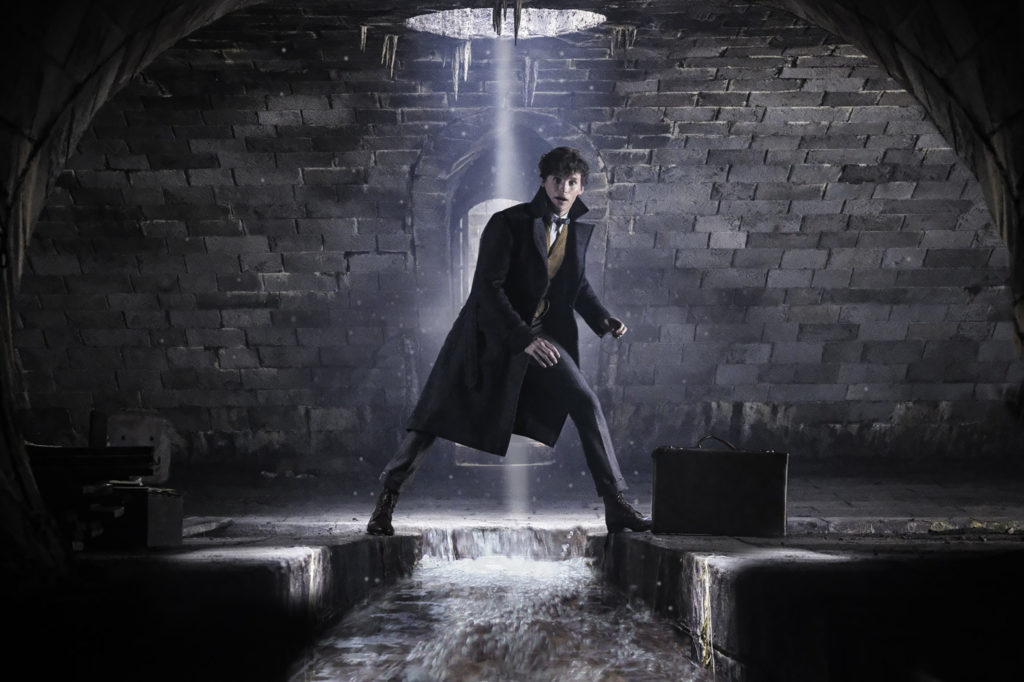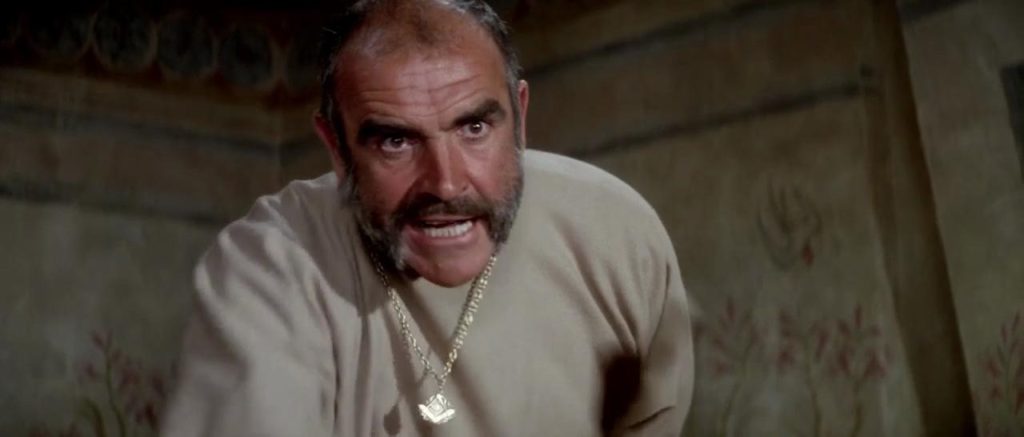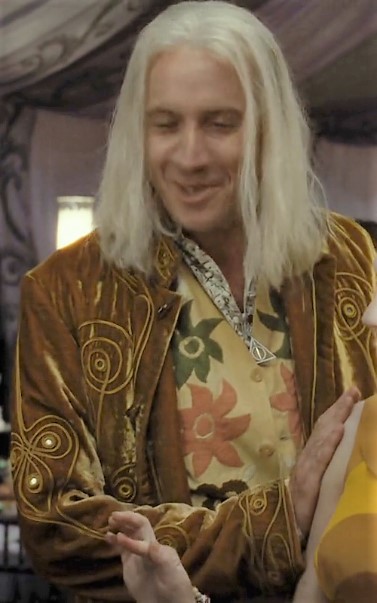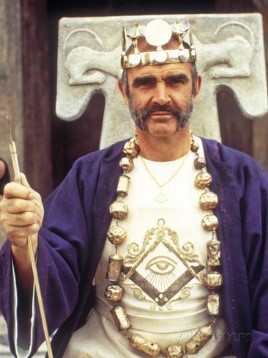“The Crimes of Grindelwald”, Kipling, and the Origins of the Deathly Hallows Symbol
This is the second article in a three-part series in which Dr. Beatrice Groves explores the links between the Deathly Hallows symbol and the Masonic symbol. The first article, in which Dr. Groves compares Green World in Shakespeare’s A Midsummer Night’s Dream to Rowling’s wizarding world and analyzes how Kipling’s Puck of Pook’s Hill (among other works) influenced Harry Potter, can be found here.
by Dr. Beatrice Groves
The Deathly Hallows symbol is inscribed all over Fantastic Beasts: The Crimes of Grindelwald. The symbol has been central to all the film’s advertising: from teaser trailers and trailers to the cover of the screenplay and posters. Uberfans have even been given their own Deathly Hallows symbols to wear in the bracelets given out at San Diego Comic-Con and the #ProtectTheSecrets badges given out at the fan prescreenings.
The Deathly Hallows symbol, as has been noticed, is even hidden within the title itself:
As we get nearer to the release date, these images have finally started to acknowledge that the Parisian setting and the importance of this symbol are linked as the Eiffel Tower begins to create a real-world echo of the symbol.
Least obviously, but most satisfyingly, perhaps, it also lies behind the framing of this image:
But by far the most evocative Deathly Hallows drop in the lead-up to Crimes of Grindelwald occurred over a year ago – October 28, 2017, a month prior to the first Crimes of Grindelwald teaser trailer – when Rowling revealed what she believes to be her subconscious source for the Deathly Hallows symbol. It is a symbol with a rich and complex creative history, in particular in reference to its alchemical shaping (which I’ll discuss in my final post). Likewise, Rowling’s exploration of the way in which an anciently sacred sign can be misappropriated – as the Deathly Hallows symbol becomes Grindelwald’s mark – draws on the co-opting of the swastika by the Nazis. And now, as I mentioned in my previous post, Rowling has given us yet a further source. She has named the Masonic symbol – two triangular shapes (a compass and a set square) with an eye at its center – as her subconscious stimulus for her symbol:
So I drew this picture [of Professor Sprout] on December 30th, 1990 … I’d been writing Potter for six months…. I was watching the movie The Man Who Would be King… at some point during the time I was watching that movie and drawing this picture, my mother died 250 miles away. And I got the phone call the next day to say that she had died.
The Man Who Would Be King, for those who don’t know, is a movie with Sean Connery and Michael Caine in it. And it’s from an old Rudyard Kipling story. And the Masonic symbol is very important in that movie. And it was literally twenty years later that I looked at the sign of the Deathly Hallows and realized how similar they were.
When I saw the movie again and saw the Masonic symbol I sort of went cold all over and I thought, ‘Is that why the Hallows symbol is what it is?’ and I’ve got a feeling that on some deep subconscious level they are connected. So I feel as though I sort of worked my way back over twenty years to that night because the Potter series is hugely about loss and you know I’ve said this before if my mother hadn’t died I think the stories would be utterly different and not what they are.
Rowling is not exaggerating when she notes that “the Masonic Symbol is very important” to The Man Who Would Be King. Kipling had become a Mason three years before writing the story and Masonic symbolism is a crucial underpinning of it. It becomes even more important in the film, in which it is both the center of the plot and visually dominant. It entirely takes over the screen at a number of times as the camera zooms in on its appearances on the gold talisman on the watch, on the secret stone, on Danny’s necklace, and on his Masonic apron.
The links between the Masonic symbol and the Deathly Hallows symbol, however, go far beyond the visual similarity which Rowling notes.
Masonic Golden Necklace
In the film, the most important moment for this symbol – when it is zoomed in on and framed in the center of the screen – is when the priests tear Danny’s clothes away from his neck, preparatory to executing him. They then start back in stunned reverence upon finding that around his neck hangs this sacred symbol. The Deathly Hallows symbol, as you will recall, first appears in Harry Potter on a golden chain around a man’s neck. (As it does, indeed, in the Fantastic Beasts films).
In Harry Potter, the reader first “sees” the Deathly Hallows symbol on a gold necklace worn by Xenophilius Lovegood at Bill and Fleur’s wedding: “An odd symbol, rather like a triangular eye, glistened from a golden chain around his neck” (DH, ch. 8). Compare these two images from the films (Sean Connery is also wearing the same rather natty “sun colors” as Xenophilius does as the wedding):
The first appearance of the Deathly Hallows symbol within the series – “the strange, triangular eye… gleaming on [Xenophilius’s] chest” – has some telling links with Masonic symbols. The necklace is visible to all, but it is being worn in public as a secret sign, legible only to the initiated. It is worn in order that other members of your symbolic “sect” will recognize you as a fellow traveler and accept your request for assistance: “One simply uses the symbol to reveal oneself to other believers, in the hope that they might help one with the Quest” (DH, ch. 21).
This is precisely how Masonic signs function. They are worn in public but only reveal you are a Mason to fellow adepts who know how to correctly read the sign. And having recognized you as a fellow, they are then duty-bound to help you. In The Man Who Would be King, the narrator only meets Peachy Carnehan because he steals his watch. Peachy is a rogue and a thief, but he is also a Mason, and upon finding the Masonic token on the watch, he feels duty-bound to return it. The narrator, although knowing full well that Peachy just stole his watch, feels duty-bound to assist him in his turn as a fellow Mason.
In another connection, the Deathly Hallows symbol is twice described as an eye when it is first described at the beginning of Harry Potter and the Deathly Hallows. This description allies it closely to the Masonic symbol, which is dominated by the eye at its center:
When Danny becomes King of Kafiristan, he still wears the Masonic symbol – or as Kipling calls it, the “Master’s Mark” – on his necklace, but it is even more visible on his clothes: the famous Masonic Apron. Grindelwald’s mark (another name for the Deathly Hallows symbol), likewise, was displayed on his followers’ clothing while they were still at school. Perhaps we’ll see the symbol taking on this more public placement in Crimes of Grindelwald.
Alexander the Great, Kafiristan, and Polo at Hogwarts
Kipling’s idea that there might be a shared symbolic currency between Kafirs and his English imperialists is built on the widespread myth that the Kafirs were descendants of Alexander the Great (whose army had passed through the region so many centuries before). And indeed, the Alexander Romance – a tissue of traditional stories told about Alexander the Great – lived on in the oral tradition of Afghanistan, just at it had in the classical syllabus of Victorian schools. As Llewellyn Morgan has shown, these “stories were certainly alive and kicking when the West renewed its acquaintance with Afghanistan: the Alexander folklore that British soldiers encountered in Afghanistan in the nineteenth century.” Alexander myths were a true meeting point for these two cultures – a fact that Kipling’s story brilliantly exploits. John Huston’s 1975 film expands on the underlying Alexander connection of Kipling’s story (in which Danny is hailed as “the son of Alexander”): In the film, Danny is repeatedly called “son of Sikander,” the Kafir holy city is named Sikandergul, and Danny’s wife is named Roxana (after Alexander’s wife).
Kipling’s story interweaves excitement of a “new-found” land with Masonic symbolism and the Alexander Romance. And to my delight, one connection with the Alexander Romance links through the film of The Man Who Would Be King to Harry Potter.
In the Persian version of the Alexander Romance Darius, the King of Persia (and father of Roxana) taunts Alexander that he can’t conquer his Kingdom and might as well just go play polo.¹ Polo, the “sport of Kings,” developed in Persia (and was, of course, enthusiastically taken up by the British in India). In The Man Who Would Be King, polo is likewise a popular game in Kafiristan, but with one rather gruesome variation. One of the earliest texts about Kafiristan noted that the Kafirs “cut off the heads of their enemies”² – and in the film, the Kafirs play a truly grotesque variation of polo in which they substitute the decapitated heads of their enemy for the polo balls.
And this macabre version of polo was presumably the stimulus for Rowling’s creation of the ghostly sport of “Head Polo,” in which the Headless Hunt substitute a decapitated head for the polo ball.
My final post explores links between alchemical and Masonic symbolic meaning and argues for one further, startling connection between Deathly Hallows and The Man Who Would Be King.
¹ Konstantakos, Ioannis M. “Alexander and Darius in a Contest of Wit (Alexander Romance, 1.36-38): Sources, Formation, and Storytelling Traditions,” Acme 1, 2015, pp.129-56 (137).
² Leitner, G.W. Kafiristan: The Bashgeli Kafirs and Their Language. Lahore, The Albert Press, 1880, p. 5. I think that this book is an – as yet unacknowledged? – source for Kipling’s story.
Dr. Beatrice Groves teaches Shakespeare at Oxford University and is the author of Literary Allusion in Harry Potter, which is available now. Don’t miss her earlier posts for MuggleNet, in which she discusses Harry Potter and Shakespeare, Harry Potter and Sherlock Holmes, and more!


